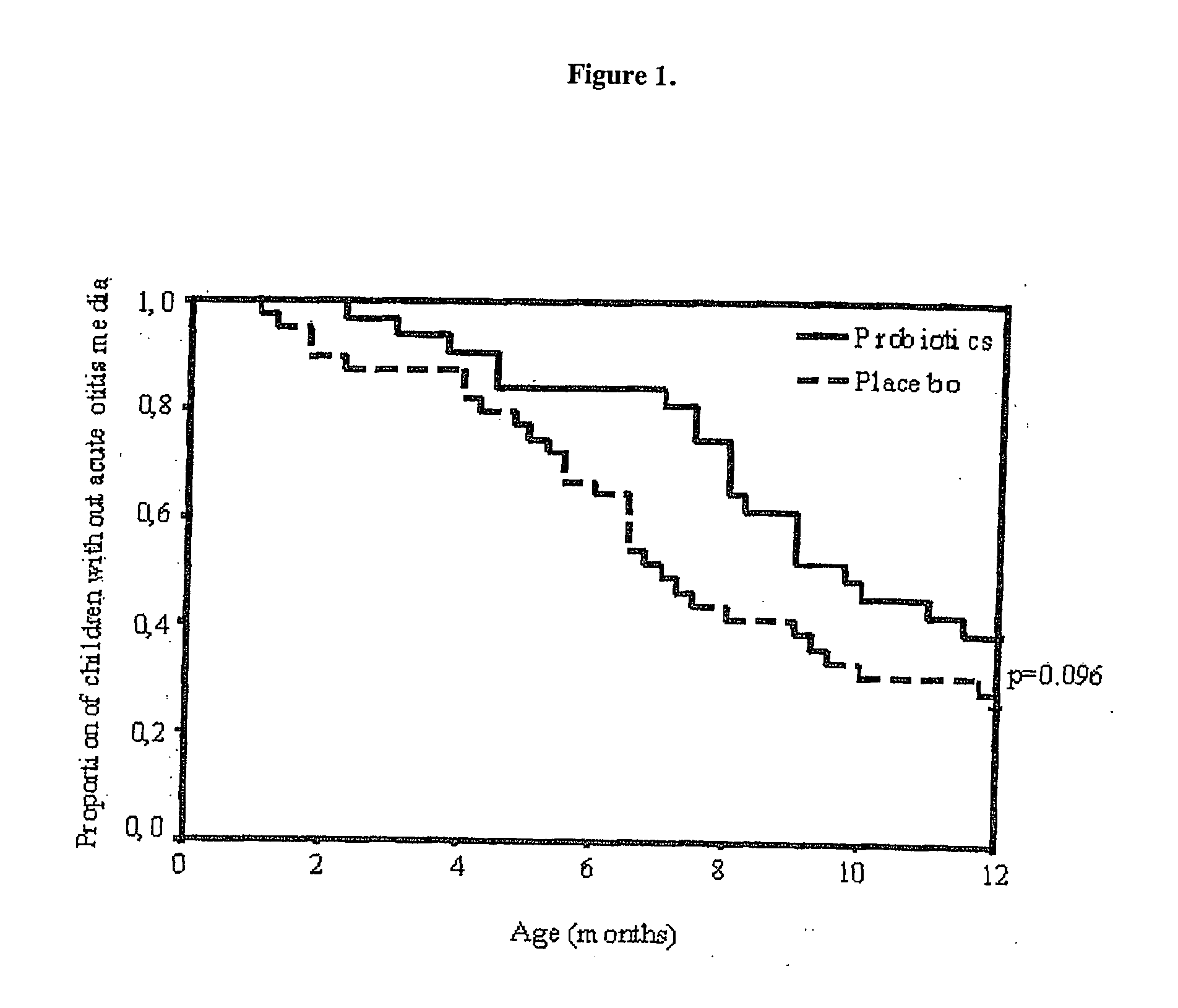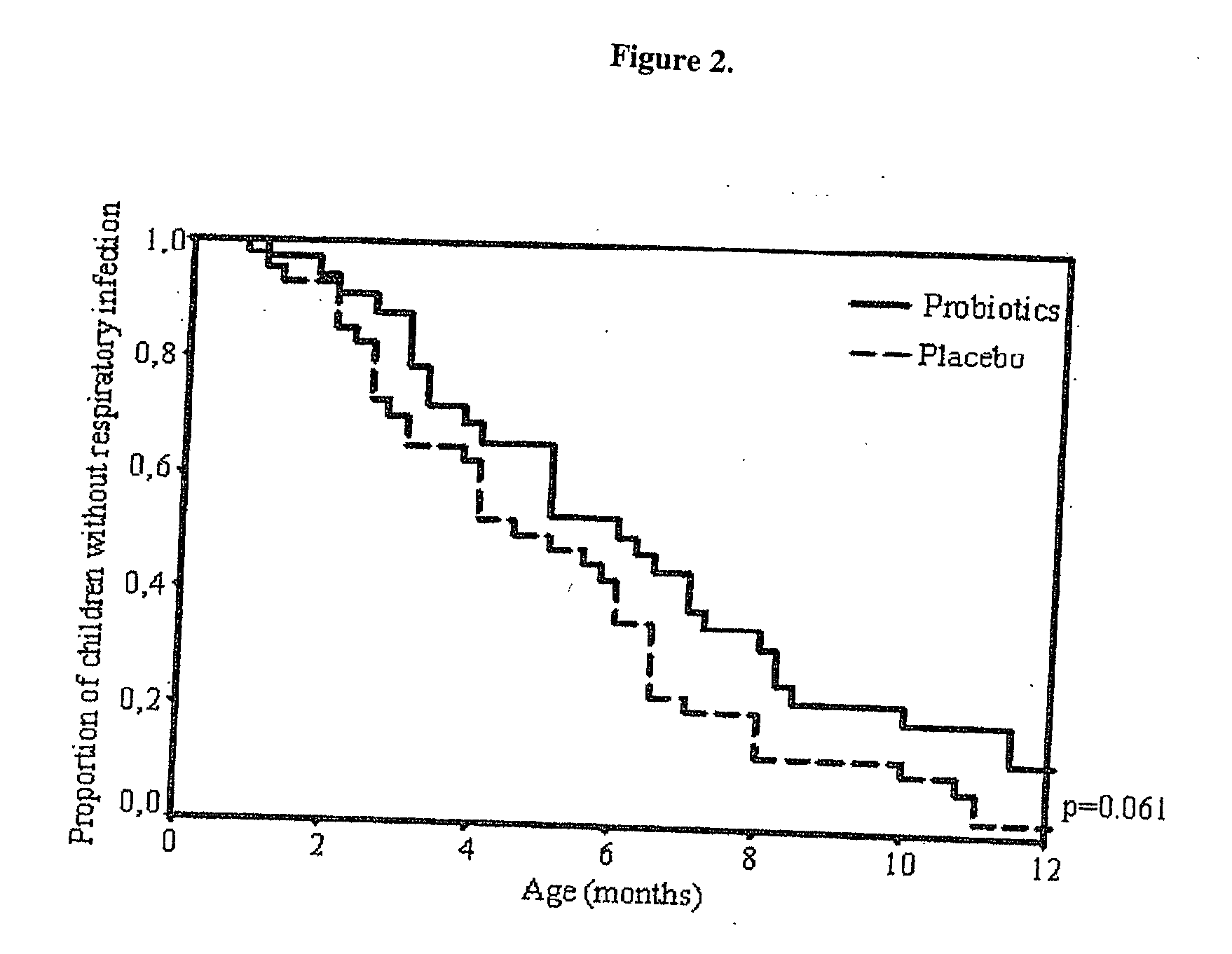Method for preventing or treating respiratory infections and acute otitis media in infants
- Summary
- Abstract
- Description
- Claims
- Application Information
AI Technical Summary
Benefits of technology
Problems solved by technology
Method used
Image
Examples
example 1
[0065] This example describes the materials and methods necessary to show the effect of a strain of Bifidobacteria and an adherence-promoting probiotic on the frequency of respiratory infections and AOM.
[0066] The infants participating in the double-blind, placebo-controlled clinical study conducted by the inventors were recruited in well-baby clinics in Turku, Finland between September 2000 and May 2002. The sole inclusion criterion for the study was the need for infant formula before the age of two months. Infants with chronic disease were excluded.
[0067] In total, 81 infants were block-randomized with individual codes to receive either 1×1010 colony-forming units of both Bifidobacterium lactis Bb-12 and LGG or a microcrystalline cellulose placebo daily until the age of 12 months. The daily probiotics or placebo were provided in visually identical capsules, the contents of which were supplemented into infant formula (Enfamil®, Mead Johnson Nutritionals, Evansville, Ind.). The fo...
example 2
[0074] This example illustrates the effects of Bb-12 and LGG on the frequency of respiratory infections and AOM. The baseline characteristics, shown in Table 1, were similar in infants receiving probiotics and placebo.
TABLE 1Baseline Characteristics and HistoryProbioticsPlacebo(n = 32)(n = 40)Boys16 (50%)19 (48%)Gestational age39.8weeks39.9weeksmean (range)(36.7 to 42.1)(35.1 to 42.3)Birthweight3440g3540gmean (range)(2300 to 4100)(2140 to 4580)Older siblings15 (47%)24 (60%)Parental smoking18 (56%)22 (55%)Exclusive breastfeeding1.9weeks1.9weeksmean (range)(0.0 to 6.0)(0.0 to 6.0)Total breastfeeding2.0months2.4monthsmean (range)(0.25 to 12.0)(0.25 to 7.5) Age at start of38days35daysintervention (range) (6 to 65) (2 to 59)
[0075] The mean age at start of intervention was 38 days (range 6-65) 5 in infants receiving probiotics and 35 days in (range 2-59) in infants receiving placebo. The follow-up was completed by 72 of the 81 (89%) infants enrolled. The mean age at the time of withdraw...
PUM
 Login to View More
Login to View More Abstract
Description
Claims
Application Information
 Login to View More
Login to View More - R&D
- Intellectual Property
- Life Sciences
- Materials
- Tech Scout
- Unparalleled Data Quality
- Higher Quality Content
- 60% Fewer Hallucinations
Browse by: Latest US Patents, China's latest patents, Technical Efficacy Thesaurus, Application Domain, Technology Topic, Popular Technical Reports.
© 2025 PatSnap. All rights reserved.Legal|Privacy policy|Modern Slavery Act Transparency Statement|Sitemap|About US| Contact US: help@patsnap.com


